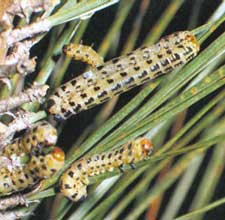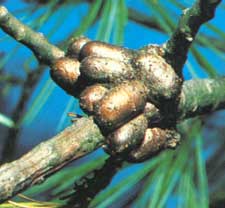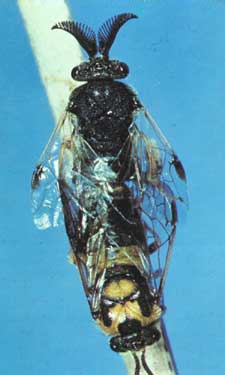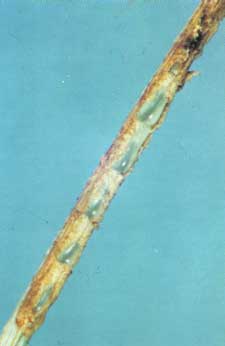SawfliesCaleb L. Morris - Chief (retired), Insect and Disease Investigations, Virginia Division of Forestry, Charlottesville, VA, and Cordell C.E., Anderson R.L., Hoffard W.H., Landis T.D., Smith R.S. Jr., Toko H.V., 1989. Forest Nursery Pests. USDA Forest Service, Agriculture Handbook No. 680, 184 pp. Damage Damage to conifer seedlings in forest tree nurseries is generally minimal. However, when outbreaks exist in the immediate vicinity of the nursery, seedlings may be defoliated by migrating larvae in search of suitable host foliage. Diagnosis Pine sawfly larvae characteristically feed gregariously in small groups for at least a short period after hatching. Look for the early instars feeding on the edge or edges of individual needles. The larvae begin at the distal end, often first attacking those needles upon which the eggs were laid. The damaged portions of the needles turn brown, twisting as they become desiccated. As the larvae grow larger, they consume the entire needle, feeding in groups or as individuals. The larvae develop specific patterns of stripes and spots as they mature beyond the third instar (fig. 26-1). These patterns are useful in identifying the larvae of some species, particularly larvae of the redheaded pine sawfly, the white pine sawfly, and the introduced pine sawfly. However, a large number of other Neodiprion species are somewhat similar in appearance and in behavior. In these cases, morphological characteristics, such as the saw and lancets of the adult female, are beneficial in making a positive identification.
Control Cultural - If infestations are localized, handpicking of sawfly colonies may control the problem. Chemical - Apply insecticides when the larvae are young (first and second instars) to minimize seedling damage. Two insecticides widely used against conifer sawflies are carbaryl and malathion. Table 26-1 - Sawflies, their hosts, and distribution in the United States. Selected References U.S. Department of Agriculture. Forest Service. 1987. A guide to common insects and diseases of forest trees in the Northeastern United States. NA-FR-4. Broomall. PA: U.S. Department of Agriculture, Forest Service, State and Private Forestry. Northeastern Area: 63-68. U.S. Department of Agriculture, Forest Service. 1985. Insects of eastern forests. Misc. PubI. 1426. Washington, DC: U.S. Department of Agriculture, Forest Service. 608 p. |
Forest Pests: Insects, Diseases & Other Damage Agents |

|
|





